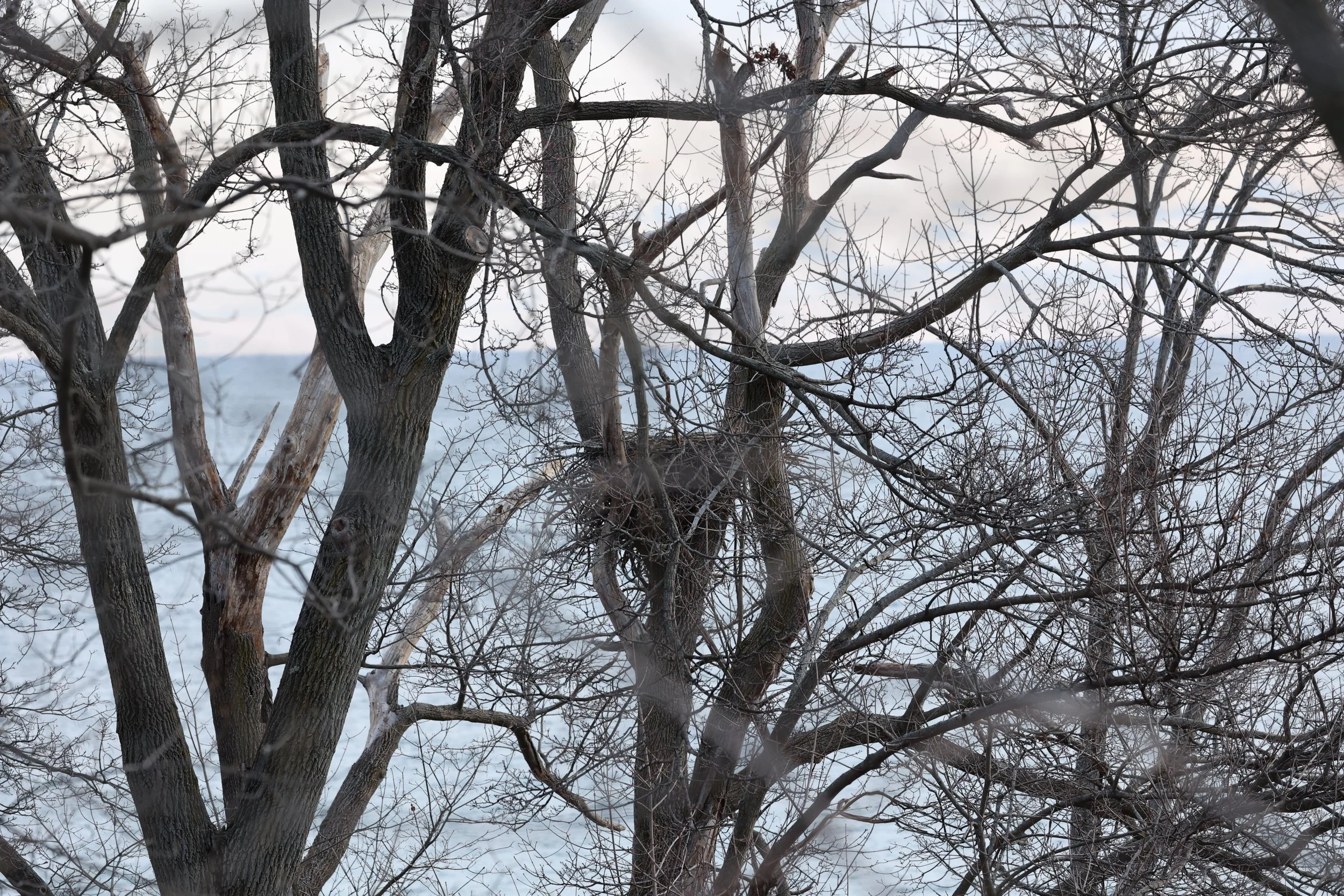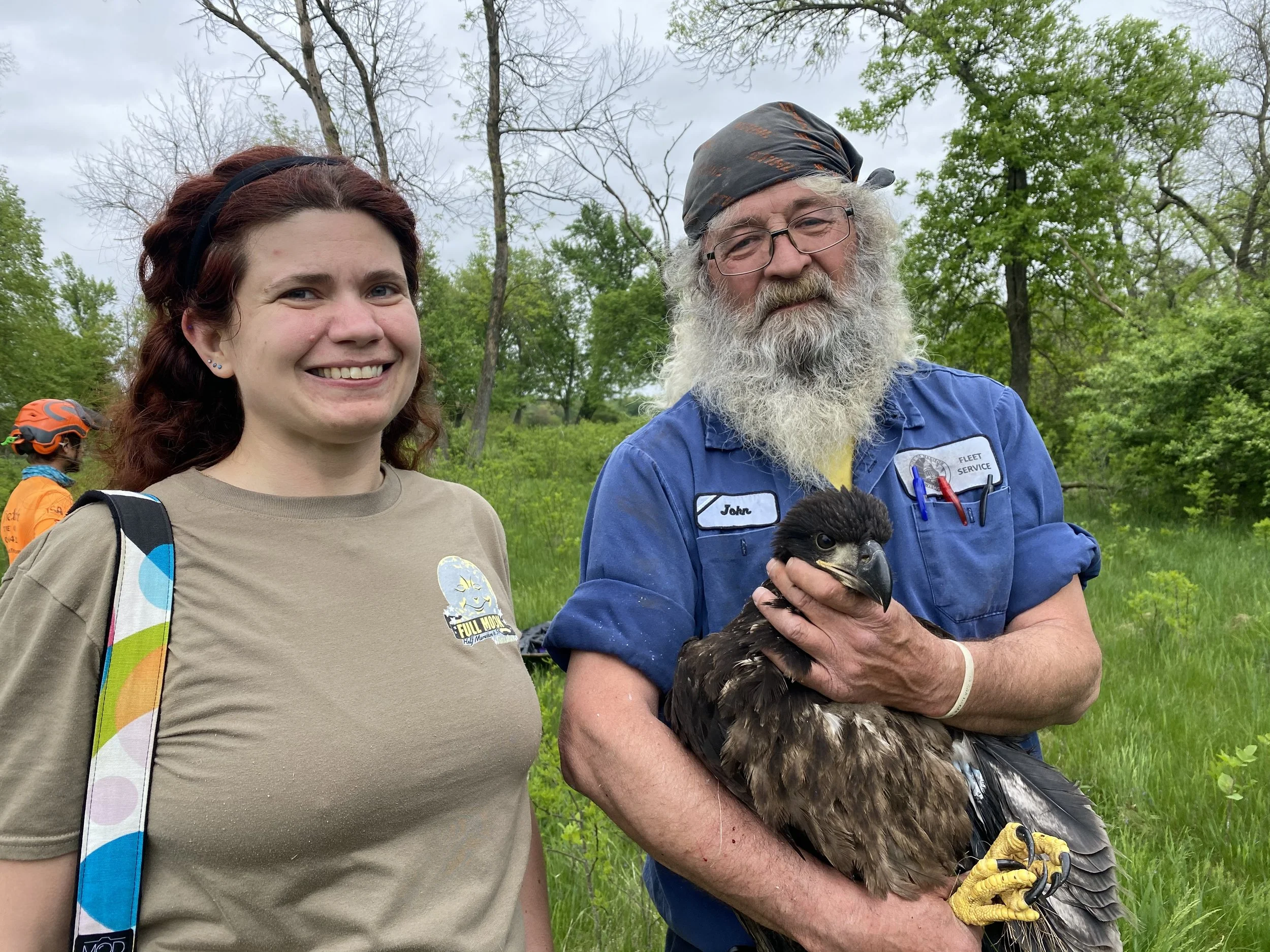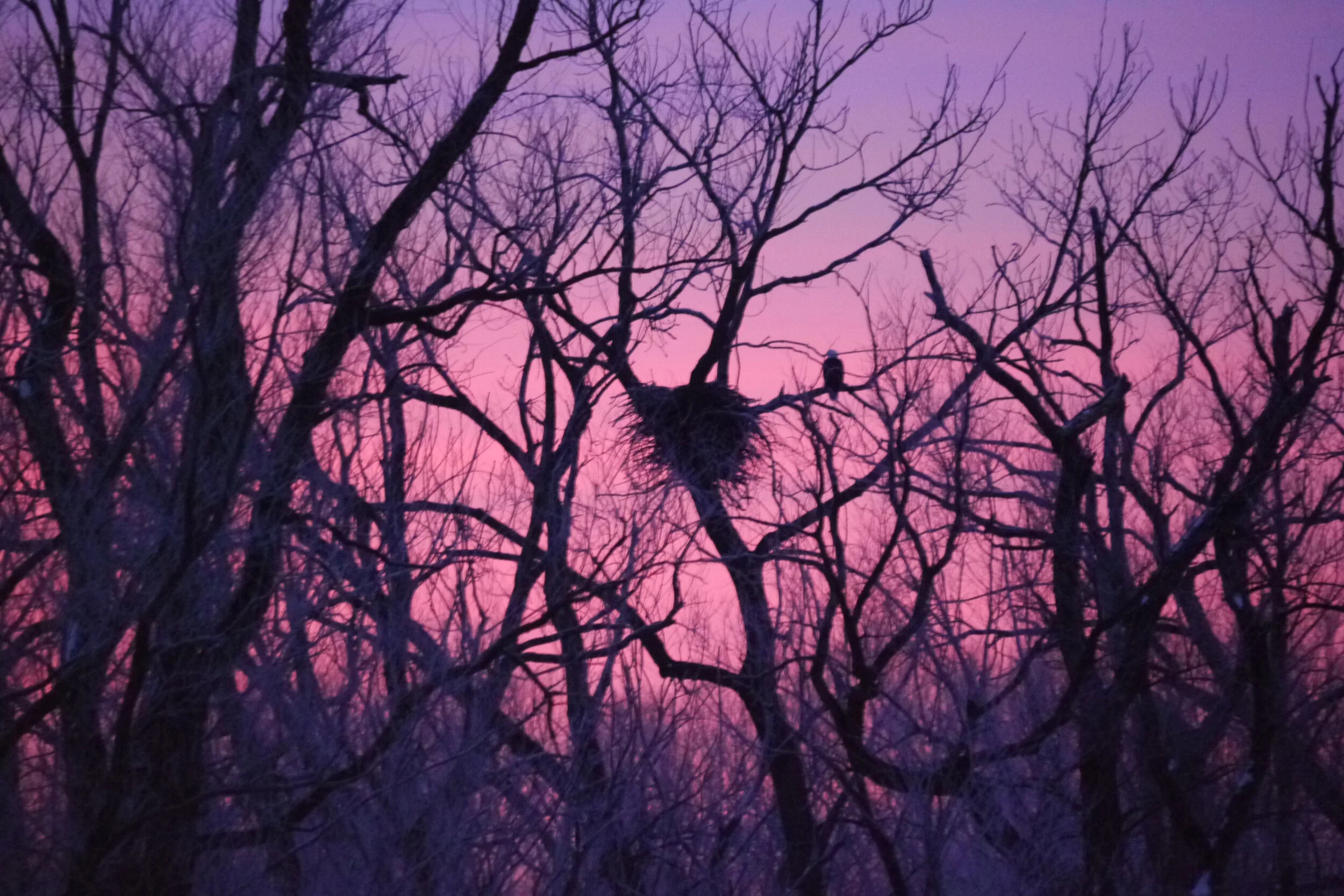Two of our three hunters use lead-free ammunition. I did not think to ask the third. I shall next season but he is an extraordinarily ethical and knowledgeable hunter, who is concerned about the safety of the food his family eats. I hope and expect that he uses non-toxic ammo. I don't know about the group that hunts next door but I'm not so optimistic about their ammo. The point being that there's some chance the eagle was feeding on a carcass contaminated with lead.
We can and should stop this poisoning of our eagles. Copper ammunition is widely available, as effective as lead, and non-toxic. It's more expensive but that will change over time if demand grows. Hunters can practice shooting and sight in firearms with the lead loads and use copper in the field.
My sad guess is that passing these regulations will be difficult in many states, including Wisconsin. I predict we'll hear that the copper ammunition is too expensive and the regulations a curtailment of hunters' rights.
In October 2020, Ron Spomer, one of the most respected experts in outdoor, hunting and fishing journalism on firearms and ballistics for hunters, created a video and article analyzing the differences between copper and lead shot in practice and in consequences. In his words:









